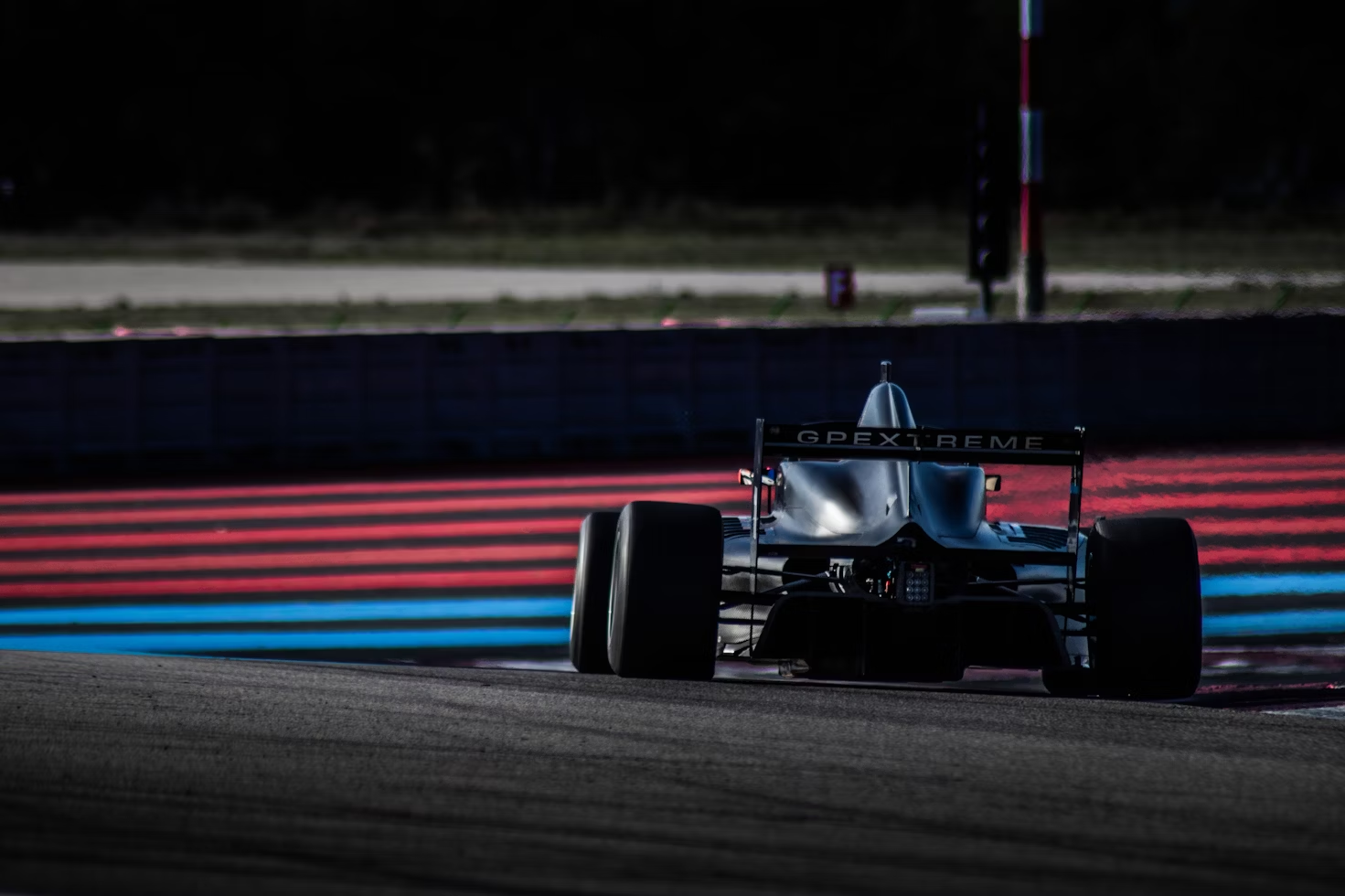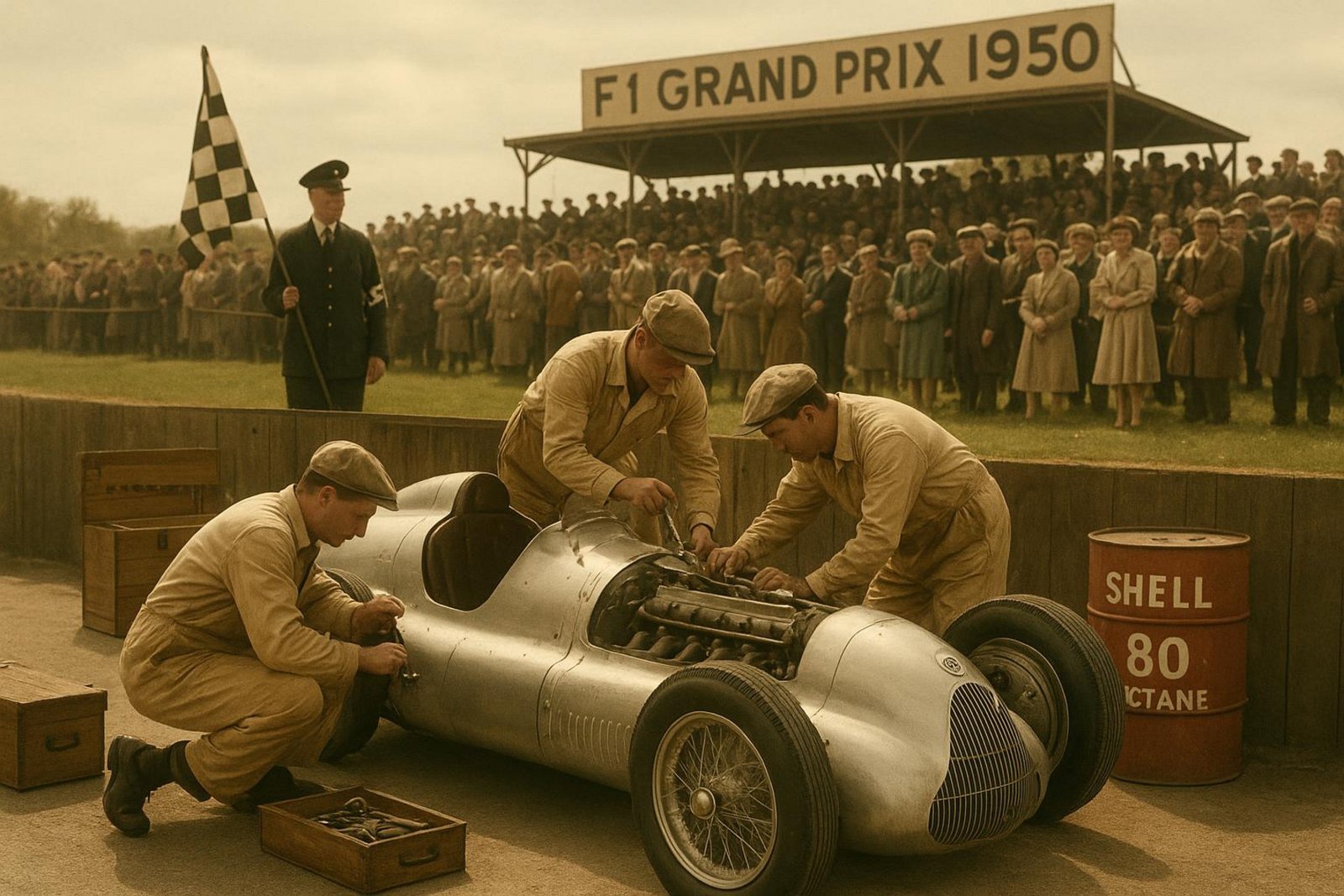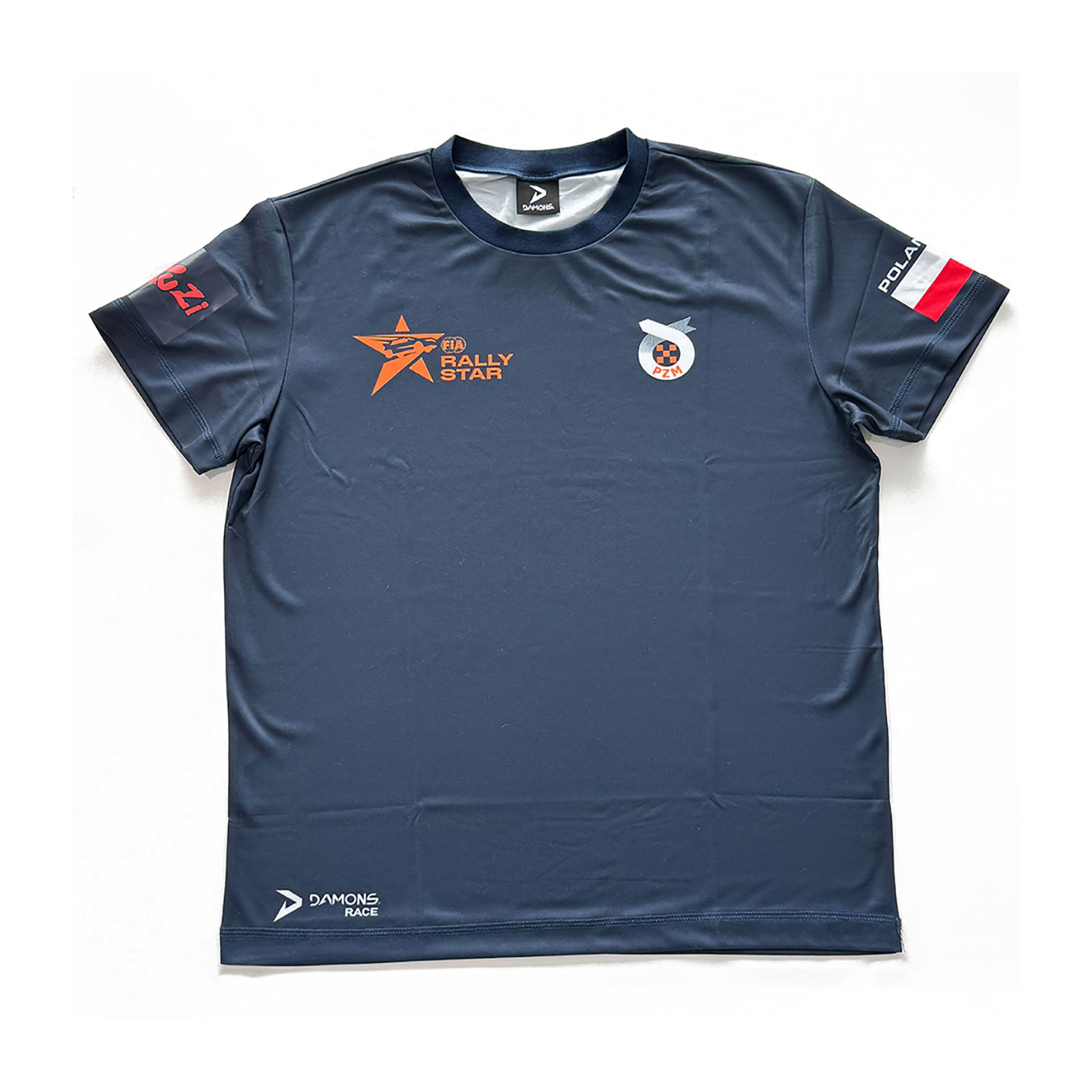Is F1 a Sport?

Is Formula 1 truly a sport? Yes. Despite debates and myths, F1 clearly fits what most people call a sport. It demands high physical fitness, sharp thinking, smart tactics, and precise engineering.
This article looks at how F1 grew, how it works, and what it asks of drivers and teams, showing why it is a major sport followed around the world.
What Defines a Sport and Does Formula 1 Qualify?
What Are the Criteria for a Sport?
A “sport” usually includes:
physical activity and effort
competition between individuals or teams
clear rules and officials
skill developed through practice and training
teamwork and planning, in many cases
Most definitions, like Merriam-Webster’s, mention stamina, strength, or agility. Sport also involves a drive to improve and win inside a fair and structured setup.
Some say that using a machine reduces the human side. But the core of sport is people pushing limits in a contest. A runner over long distance, a chess player under pressure, or an F1 driver handling a high-speed car all face a serious test of skill, focus, and effort.
How Does F1 Meet or Differ from Traditional Sport Definitions?
F1 meets-and often goes beyond-many common ideas of what a sport is.
Drivers are elite athletes who control advanced cars at over 370 km/h (230 mph), while handling G-forces up to 6.5g in corners and 6g under braking. This strain is as hard as, and in some ways tougher than, many other sports.
Races can last around two hours in cockpits that reach 60°C (140°F). Drivers can sweat off up to 4 kg (9 lbs) in a single race, which shows how demanding it is.
On the mental side, F1 is a hard test of awareness and strategy. Drivers make split-second decisions, manage tires and fuel, talk with engineers, and memorize complex tracks. Balancing physical and mental load separates F1 from regular driving and places it at the top level of athletic competition.
Technology is part of the sport, but it raises the challenge. Drivers must master both the car and the craft.
What Are Common Misconceptions About F1 as a Sport?
A common myth is that the car does the work and the driver just steers. That is false. F1 cars are amazing machines, but they require skill, precision, and strength to drive on the limit.
The idea that “anyone can drive in circles” ignores years of training and the rare ability needed in F1.
Another myth is that F1 lacks physical contact like rugby or basketball. Drivers may not tackle each other, but they fight physics, time, and 19 rivals who run within milliseconds of each other. One poor braking point or failed pass can have big consequences.
Some also claim drivers aren’t athletes because they don’t look like sprinters. F1 requires special conditioning, especially neck and core strength, to handle huge G-forces.
History and Development of Formula 1 as a Sport
How Has F1 Changed Since Its Beginnings?
F1 began after World War II and grew into a global racing series. Talks about a world championship started in the late 1930s.
The first official FIA Formula One World Championship race took place at Silverstone, UK, on May 13, 1950. Early years featured Alfa Romeo, Ferrari, Maserati, and Mercedes-Benz, with cars far simpler than today.
The first season in 1950 had just seven races, mainly in Europe. Over time, F1 spread across five continents. New technology, stronger safety rules, and bigger business deals turned it from a European niche into a multi-billion-dollar international sport.

What Key Changes Shaped F1's Sporting Status?
Key changes included:
major car innovations (mid-engined layouts, monocoque chassis) that improved speed and safety
commercial sponsorship starting in 1968, which brought more money and professionalism
Bernie Ecclestone centralizing TV and commercial rights in the 1970s, growing F1 worldwide
stronger governance through FISA in 1979 and the 1981 Concorde Agreement, which stabilized rules and relationships
These shifts built a stable, rule-based competition and helped define F1 as a well-organized sport.
How Have Rules and Regulations Developed?
F1 rules keep changing to balance competition, safety, and tech progress. Early rules were simple. As speeds rose, safety took center stage.
The deaths of Ayrton Senna and Roland Ratzenberger in 1994 led to big safety upgrades over time, including the “halo” cockpit device in 2018, which has already saved lives.
Technical rules also change to shape racing and control costs. Traction control and auto shifting have been banned and allowed at different times, as the sport debated tech vs. driver skill. Engines moved from V8s to 1.6-liter turbo hybrid power units.
A budget cap began at $175 million in 2021 and dropped to $135 million by 2023 to bring teams closer together and keep spending under control. These updates show how F1 keeps adjusting the contest to stay safe, fair, and exciting.
Recognition of F1 as a Sport by Official Bodies
Is F1 Recognized by the International Olympic Committee or Sports Federations?
F1 is not part of the Olympic Games, but it is run by a major international sports body: the Fédération Internationale de l’Automobile (FIA), founded in 1904.
The FIA governs motor sport worldwide, including F1. It sets and enforces rules to keep racing fair and safe for all. Its wide oversight covers driver licensing (the Super Licence is required for F1) and track standards (F1 needs Grade One tracks). This official structure confirms F1’s place as a serious, tightly regulated sport.
Not being in the Olympics does not reduce its status. Many sports are globally respected without being Olympic events. F1’s reach, popularity, and high demands on drivers and teams are recognized by sports authorities through the FIA.
How Is F1 Regulated at the International Level?
The FIA regulates F1 closely. The “formula” is the set of rules every car must follow, preventing an unchecked tech race and keeping competition close. Rules cover engine size, power unit parts, aerodynamics, and safety systems.
The FIA also governs sporting conduct. A race weekend has practice, qualifying, and the Grand Prix under a detailed rulebook. The Race Director manages race operations, applies rules, and sends incidents to stewards. Penalties can be drive-throughs, time penalties, or disqualifications.
The rule set keeps changing to improve safety and create closer racing, showing the FIA’s active role in protecting the sport’s fairness.
F1 Race Structure and Competitive Elements
How Are Formula 1 Races Organized?
An F1 Grand Prix weekend is carefully planned and full of action:
Friday: Two free practice sessions for setup work and data gathering (sometimes with a third driver).
Saturday: Final practice, then qualifying (Q1, Q2, Q3) with the slowest cut each round until the top 10 fight for pole.
Sunday: Formation lap, standing start, and the race over 300-305 km (Monaco is about 260 km), usually around two hours.
Qualifying decides the grid. The race starts when five red lights go out, and drivers manage pace, tires, and strategy to the flag.
What Are the Main Strategic and Tactical Components in F1?
Strategy shapes every race. Key parts include:
Tires: Soft, medium, and hard compounds trade grip for durability; drivers must use at least two dry compounds in a dry race.
Pit stops: Timing and execution (often under two seconds) can win or lose races.
Safety cars: Full or virtual safety cars can open “cheap” stop windows and change track position.
DRS and aero: Setups and driver-adjustable systems help overtaking and straight-line speed.
Fuel and energy: Even without refueling (banned since 2010), fuel use and energy recovery still matter.
Sprint weekends: Extra races on some weekends add points and change how teams plan.
How Are Points and Championships Decided in F1?
Each season awards two titles: Drivers’ and Constructors’. Points go to the top ten in each race. A driver must be classified and, from 2025, complete at least 90% of race distance to score.
Position | Points |
1st | 25 |
2nd | 18 |
3rd | 15 |
4th | 12 |
5th | 10 |
6th | 8 |
7th | 6 |
8th | 4 |
9th | 2 |
10th | 1 |
Sprint races on some weekends also give points to the top eight. The driver with the most points at season’s end becomes World Champion.
The Constructors’ title goes to the team with the highest combined points from both drivers. This setup rewards both individual talent and team effort, often creating title fights that reach the final race.
Physical and Mental Demands on Formula 1 Drivers
What Physical Fitness Levels Do F1 Drivers Require?
F1 drivers are among the fittest athletes. They face up to 6.5 Gs in corners, 6 Gs under braking, and 2 Gs in acceleration. Necks and cores must be very strong; a driver’s neck can resist forces equal to about 40 kg during big stops. This is not about big muscles, but focused strength to keep control and accuracy.
Cardio fitness is also key. Heart rates can stay above 170 bpm for almost two hours in cockpits that can hit 60°C (140°F), all while wearing fireproof gear. Drivers can lose several kilograms through sweat, so they train for endurance, strength, and heat management to keep their bodies performing well under extreme strain.
How Important Are Reflexes and Mental Agility in F1?
In a sport decided by milliseconds, fast reactions and sharp minds are very important. F1 drivers make decisions at speeds that are hard to imagine. On the Batak reaction board, an average person hits around 50 in 60 seconds; F1 drivers hit 70-80, and some top 120. That speed helps with quick changes, cornering, and avoiding incidents.
Drivers also process constant information: car data, radio messages, tire feel, fuel levels, and where rivals are. They adjust lines, braking points, and passes as the race changes. One lapse can cause a mistake or crash. The mental load is heavy and lasts the entire race.
Do F1 Drivers Train Like Other Athletes?
Yes. F1 drivers train with the same dedication you see in other elite sports, but with a focus on their specific needs. Programs are built for cardio endurance, neck and core strength, and reaction time. They manage weight too, since the FIA sets a minimum driver weight of 82 kg (181 lb). Extra weight can slow the car.
Many drivers compete in other endurance events, like Jenson Button’s Ironman races, showing broad fitness. They also spend many hours on simulators (such as rFpro) to sharpen decisions and car control. This full program means they arrive at the track fit, sharp, and ready to push themselves and their cars.
Role of Technology and Teams in F1 Competition
How Does Car Technology Influence Competition?
Technology is central to F1. These cars are among the most advanced racing machines ever made. Everything from the carbon-fiber chassis to hybrid power units is built for speed and efficiency.
Aerodynamics matter a lot. Wings, floors, and ground effect create huge downforce-up to 2.5 times the car’s weight-allowing very high cornering speeds and lateral forces up to 3.5g. Even small aero updates can cut lap times.
In 2014, engines moved from 2.4-liter V8s to 1.6-liter turbo hybrid V6 units. These combine an internal combustion engine with electric motors to deliver great power with strong efficiency. Pirelli supplies tires with different compounds that affect grip and strategy.
The 2022 rules reset aimed to create closer racing with new aero designs and larger wheels. Constant rule changes keep teams innovating, so F1 is an engineering contest as much as a driving one.
What Is the Role of Constructors and Teams?
A “constructor” is the entity credited with building the chassis (and the engine supplier also gets credit). Since 1981, teams must build their own chassis, unlike series where all cars are the same. This fuels a race in design and development, as each team works to build the fastest, most reliable car.
F1 teams employ hundreds of specialists. Beyond drivers, there are aerodynamicists, power unit experts, chassis engineers, data analysts, strategists, and mechanics who perform rapid pit stops and maintain complex parts.
Teams also handle logistics, finance, and marketing. In 2018, running a team cost around £193 million on average.
How Much Does the Team Behind the Driver Matter?
F1 is a team sport. While drivers get the spotlight, they rely on a large group to succeed. The car-designed and improved by the constructor-sets the base performance. Teams upgrade cars all season, so the machine at the finale can be very different from the one at the opener.
During races, drivers count on pit crews for fast stops (often under two seconds), engineers for live data and advice, and strategists for the best race plan. A missed wheel nut or poor radio call can ruin a result.
The budget cap helps balance spending, but long-standing teams still benefit from strong facilities and know-how. Titles come from a great driver working with a great team.
Comparisons: Formula 1 Versus Other Sports
How Physically Demanding Is F1 Compared to Other Sports?
F1 drivers face unique strains. Like marathoners, they keep a high heart rate for long periods. Unlike most athletes, they also fight constant G-forces, especially on the neck, which needs special strength.
Energy use is high. Studies show F1 drivers use 9-13 times resting energy, similar to players in intense team sports. Add extreme heat, high-speed precision, and risk, and you get a mix few sports can match: endurance like distance racing, targeted strength like weight training (neck and core), and fine control like a precision sport.
What Makes F1 Unique Among Motorsports?
F1 sits at the top of circuit racing because it pairs skill with rapid engineering progress. Unlike “spec series” where cars are the same, F1 requires each team to design and build its own chassis. Development never stops, creating a season-long design race that often leads to tech that later appears on road cars.
Its global reach and history since 1950 draw the best drivers, engineers, and designers. Grands Prix take place on five continents, with a massive TV audience. Cutting-edge tech, heavy physical and mental demands, complex strategies, and large budgets make F1 stand apart from other series.
Popular Perceptions and Debates: Is F1 Truly a Sport?
What Do Fans, Athletes, and Experts Say?
The debate continues, but many fans and people inside F1 call it a top sport. They point to tough fitness programs, elite reaction times, and the G-forces drivers handle as clear proof of athletic skill.
Some critics, often less familiar with F1, argue that the car matters more than the driver or that “driving in circles” is not a sport. These views usually miss the specific skills and training needed.
Media like Netflix’s Drive to Survive has helped more people see F1 drivers as athletes on par with stars in other sports. Many athletes from other fields praise F1 drivers once they see what the job involves.
Should F1 Be Considered a Team Sport or an Individual Sport?
F1 blends both. One driver wins the race and the Drivers’ title, but no one wins alone. Success depends on a large team.
Hundreds of engineers, strategists, and mechanics support each driver. Without a fast, reliable car and sharp strategy, even the best driver rarely wins. The Constructors’ Championship honors team success directly. F1 is best viewed as an individual contest inside a large team effort where both sides must be strong.




